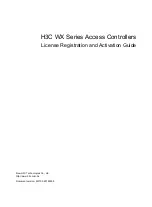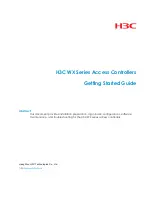
1 Instructions for user
1 1 Instructions to be read before
using the equipment
Please comply with the following instructions in order
to avoid any risk of injury or inappropriate use of the
appliance.
1 2 Safety instructions
1 2 1 Start-up
"
Do not switch the appliance on until every
fillings have been done
"
The installation must always be connected to
the Earth and fitted with a protective circuit
breaker
"
Do not modify the electricity supply
1 2 2 Use
"
Do not place any heat source under the control
box, room control unit or room thermostat
1 2 3 Maintenance
"
Do not try to repair this appliance yourself
"
This appliance does not contain any components
capable of being repaired by the user himself
Removing one or other of the covers can expose
you to dangerous electrical voltages
"
In any case, switching off the current is not
sufficient to protect you from any external
electrical shocks (capacitors)
"
Switch off the power supply if there are any
abnormal noises, smells or smoke coming from
the appliance and contact your installer
"
Switch off the power to the appliance before
you clean it
"
Clean all the enamelled panels of the box with a
dry or slightly damp soft cloth
1 3 Precautions and warnings
regarding your installation
1 3 1 Control system
Your installer has carefully adjusted your installation.
Do not modify setting parameters without his agreement.
If in doubt, do not hesitate to contact him.
The control system for your heating system is designed
in flow temperature for the water based on the outdoor
temperature (water control). The installation of a room
thermostat (option) allows to improve operation of the
regulation (the influence of the room temperature is
taken into account).
1 3 2 The radiators
To ensure the function of the regulation with room
influence, it's necessary that the room in which the room
thermostat is installed has no thermostatic valve or that
they must be completely open.
1 3 3 Floor-heating systems
• New floor-heating systems require to be initially
heated slowly to avoid any problems with cracking.
Check with your installer that this initial heating
procedure has indeed been performed before using
your heating system freely.
• To be efficient, floor-heating systems do not need to
be very hot and never should be. At most, the systems
should be warm to the touch in cold weather.
• The great stability in a regulation system for
floor-heating systems avoids sharp differences in
temperature. However, this stability involves a reaction
time of the order of several hours, (approx 6 hours).
• Any changes to the setting must be made slowly,
leaving the installation time to react. Adjusting the
system to exaggerated setting or in an untimely manner
always results in significant temperature fluctuations
during course of the day.
• Similarly if your dwelling has a floor-heating system,
do not reduce the heating or switch it off if you will
be absent for a short period. The reheating period is
always quite long (approx 6 hours).
1 3 4 Domestic hot water (DHW)
This function is designed as an option through the use
of a DHW tank with electrical backup heating.
When the DHW production is required, the heat pump
adapts to this demand with higher priority.
No space heating is produced while the domestic hot
water is being prepared.
The heat pump produces the domestic hot water,
which is then additively heated, if required, by electrical
backup heating inside the tank.
To ensure a DHW setting over 45°C, the electrical
backup heating or the boiler must be left on.
The electrical backup heating enables anti-legionella
cycles to be conducted efficiently.
Operation manual "1408 - EN"
- 3 -
Control Box






























